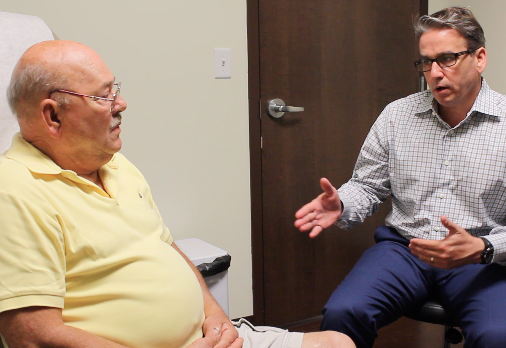Buerger’s Disease
 Buerger’s disease is a rare condition affecting the arteries and veins in a patient’s arms and legs. Medically termed thromboangiitis obliterans, Buerger’s disease causes the blood vessels in those areas to become inflamed, swollen and can generate blood clotting. The condition usually begins in the extremities and may progress to include the whole arm and leg.
Buerger’s disease is a rare condition affecting the arteries and veins in a patient’s arms and legs. Medically termed thromboangiitis obliterans, Buerger’s disease causes the blood vessels in those areas to become inflamed, swollen and can generate blood clotting. The condition usually begins in the extremities and may progress to include the whole arm and leg.
According to the National Organization for Rare Disorders (NORD), the incidence of Buerger’s disease in the U.S. falls between 12.6 and 20 per 100,000 people. Heavy smoking and tobacco use are almost always linked to a diagnosis. However, the mechanism by which tobacco affects the development of the disease has not been clarified. Many doctors believe that genetic factors also play a part in the development of the condition.
Beyond smoking, risk factors for Buerger’s disease include:
- Persistent gum disease
- Men are far more likely to develop Buerger’s disease than women. NORD estimates the male-female incidence ratio at around 10:1
- Buerger’s disease often affects people under the age of 45
Symptoms of Buerger’s disease include:
- Pain that comes and goes in the legs, feet, arms or hands – either at rest or immediately after stopping an activity.
- Inflammation of a vein due to a blood clot. This inflammation can be seen just below the skin’s surface.
- Fingers and toes that become pale when exposed to the cold, known as Raynaud’s disease.
- Painful sores on the fingers or toes
Lowering your blood pressure may decrease your risk of stroke and heart disease by about 50%.
Treating Buerger’s Disease
There are no diagnostic tests to conclusively determine whether or not a patient has Buerger’s disease, but vascular specialists typically use other testing methods to eliminate more prevalent diseases or to confirm the signs and symptoms associated with the condition. These tests may include:
- Blood tests: blood tests can exclude an array of diseases such as scleroderma, lupus, blood-clotting or diabetic conditions.
- The Allen’s test: the patient makes a strong fist to empty blood from the hand. The physician applies pressure to the arteries to impede blood flow to the hand, causing the hand to change color. After releasing the fist, the rate at which color returns to the hand is a good indicator of the health of the arteries.
- Angiogram: a doctor will place a needle full of dye into the artery exposing any blockages using x-ray technology. Angiograms may be performed noninvasively with a CT scan or MRI.
Once Buerger’s disease has been established, vascular specialists may recommend medications to dilate blood vessels or dissolve blood clots, spinal cord stimulation, or intermittent compression to the arms and legs that could increase blood flow to the extremities.
Surgery for Buerger’s Disease
In extreme cases, a board-certified vascular surgeon may recommend surgical intervention for Buerger’s disease. Surgical sympathectomy has been shown to control pain and increase blood flow, however, it is considered controversial and lacks empirical study.
If Buerger’s disease goes unaddressed, the blood flow to the patient’s arms and legs will continue to deteriorate. Without the oxygen and nutrients needed to survive, tissues cannot remain healthy. This eventually leads to gangrene, which usually precedes amputation of the affected area.
Quitting all forms of tobacco is the only way to stop Buerger’s disease. Failure to stop tobacco use can result in the need for amputation of all or part of the limb. Health care providers can offer counseling on effective smoking cessation techniques.

